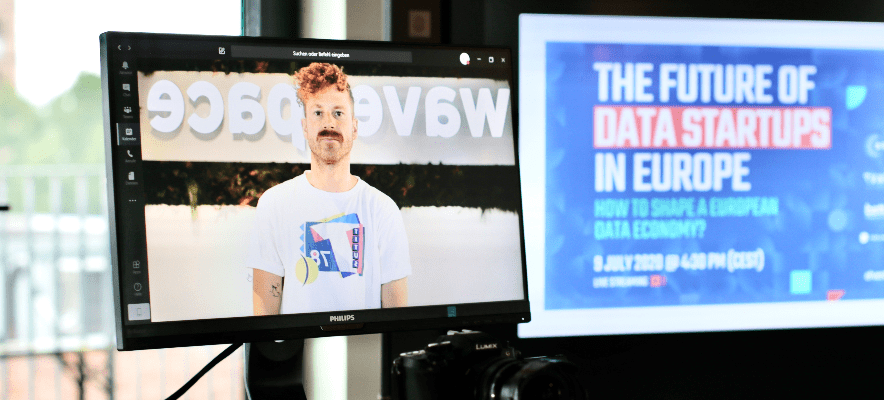#DIGITALLEARNING 5 – Digital business models
25. April 2018
Knowledge is power – especially when it comes to digitization. That’s why the etventure Learning Hub regularly presents our readers with the #DIGITALLEARNING blog series, providing them with methods, tools and know-how about digitization and innovation. Today, they will give you an overview of the most important digital business models.
“A business model describes the basic principle according to which an organization creates, conveys and records values.”
–
Alexander Osterwalder & Yves Pigneur, authors of the “Business Model Generation” handbook
A business model not only determines how the company operates, but also decides how profits are generated. It thus becomes a key success factor for a company.
When it comes to developing their own business model, companies have to ask themselves these fundamental questions:
- What is my commercial offer?
- How do I provide value to my customer?
- How do I design my value chain?
Digitization has opened up completely new opportunities to create value for companies. Digital technologies, in particular the internet, have been integrated into existing business models or completely new models have been created to replace old, analog ones. In the following, we will present you with the most successful digital business models. In practice, they are often combined.
E-Commerce
One of the best-known digital business models is the e-commerce model. It transfers the traditional offline model of trading physical goods to the online world. We know countless online shops such as Amazon or Zalando, which operate electronic trade with tangible goods and were founded based on an e-commerce model. Meanwhile, many companies from the stationary retail sector offer an online shop in addition to their offline channels to remain competitive.
Platforms
The platform as a digital business model is booming. The internet has made this possible. Companies that are operating platforms do not have their own production – their biggest asset is their reach. The aim of a platform is to bring supply and demand together in a way that allows for interaction. The most successful platforms can be found in markets that are not transparent for the user, for example in the travel or real estate sectors. Platforms such as ImmobilienScout24 or Expedia combine the offers of various providers on their pages, making search and comparison easier for users. Due to the wide reach and popularity of the platforms, it is quite attractive for real estate or hotel providers to appear on these platforms for a fee.
Freemium
Well-known examples of the Freemium model are Dropbox or Spotify. Although they offer their basic service free of charge, users can also access the premium service for an additional charge – whether this entails more storage space or unlimited music listening without advertising breaks. The basic version attracts a large number of customers. There are fewer paying premium customers, but they cross-finance the free offer. The Freemium model is well suited to make a service appealing to a large number of users in the free version, so that they are willing to pay for the premium version.
Data
Google or Facebook collect and use vast amounts of user data – and are therefore also subject to strong criticism. The data enables targeted marketing, effective market analyses, the identification of savings potential and the improvement of products or services. We often pay for supposedly free content or services with our data. Based on this data, we receive search results or advertisements according to our needs.
Subscription
If you want to watch films on Netflix or look for a partner on Parship, you have to pay a monthly fee to these providers. You use the so-called subscription model. In the same way it is commonly used by newspapers in paper form, the model can easily be transferred to countless products and services using digital technology. For a company operating on this business model, revenues are comparatively stable and, above all, easy to plan. For customers, the service is then permanently available in contrast to the pay per use model.
Pay-per-use
With the pay-per-use model, the customer is not paying a fixed contribution, but for the actual use. We often encounter this model in the transport sector or in media content. A well-known example is Car2Go where the user pays a per-minute fee for a completed ride. Revenues are correspondingly more difficult to calculate than with the subscription model. Such an on-demand service is well appreciated by customers who want to be more flexible in their usage behaviour and are not willing to pay a monthly or annual fee.
Add-On
The add-on model offers a relatively inexpensive core product while additionally offering a large number of extras. Customers thus receive a variable offer that is suited for their specific requirements. This model is particularly interesting for software products. Corporate customers, for example, often need a program tailored to their needs. Companies like SAP therefore offer a basic product that can be customized with the appropriate add-on modules.
Auction
Online auctions have been flourishing as a result of digitization and have become accessible to private individuals via the Internet. The best known example of the auction model is Ebay. Ebay is selling the products to the highest bidder. Dependent on the sales price, the provider receives a commission. Users benefit from the possibility of controlling the price.
Digital business models can be planned and analyzed using tools such as the Business Model Canvas. We will introduce this tool in our next #DIGITALLEARNING article.





* Required field